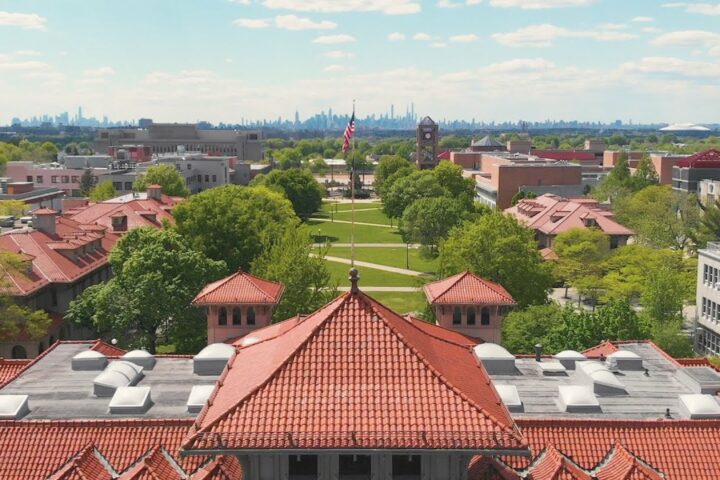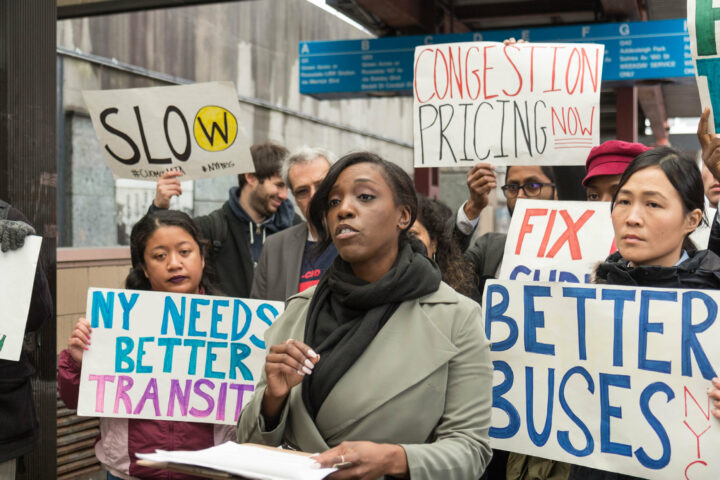The students of Queens College must keep the fire of social justice shining for the future, through activism and knowledge that helps underrepresented groups resist policies that can demean the right to education and economic stability.
QC represents the most ethnically and religiously diverse urban area in the world, according to USA Today. This means that the college must fight for the rights of all, as it did during the Freedom Rides of 1964, to show that the murders of Andrew Goodman, a QC anthropology student, Michael Schwerner, a social worker from Manhattan’s Lower East Side and James Chaney, a local Mississippi plasterer’s apprentice, were not in vain.
In a symposium titled The Long March Continues: Have We Drifted Away conducted by the Africana Studies program and the National Congress of Black Women, they discussed two topics, pertaining to the civil rights advancements that came from the Civil Rights Act of 1964 and how they are being undermined by state policies and lack thereof.
The symposium was dedicated to Goodman, Schwerner and Chaney by Evelyn Julmisse, acting director of the Africana Studies program.
One being affirmative action, which gives underrepresented groups according to race, ethnicity, socioeconomic status, gender, orientation and health opportunities for work and education in the public sector.
“When people are getting benefits for being disabled, that came out of the civil rights movement,” said Faye Williams, president of the National Congress of Black Women.
Williams explained that under-represented groups including the LBGT community, disabled people and even white women all benefitted from the civil rights movement.
The professional panel discussed how enemies of affirmative action attack its legitimacy, saying it only gets “unqualified” people into positions that qualified people are pushed out of, said Cynthia Rountree, director of Compliance and Diversity at QC.
“Affirmative action allows people without opportunities to get the same treatment. We cannot live in a sterile society, we cannot move forward and think things have changed. We are still fighting for education and housing rights,” Rountree said.
In April, a Supreme Court decision ruled in favor of the state of Michigan, that voters may prohibit affirmative action in public universities. As a student panelist to the symposium, I asked, since the decision set huge precedence for future cases against affirmative action, what is the legal argument for its protection?
What can be done is be mindful of every action against affirmative action and resist it, Rountree responded.
Although Roundtree did not specify how to resist, by showing the facts people will know the consequences of states without affirmative action. An example would be the case of California. Since they abolished affirmative action in 1998, minority student admissions in University of California—Berkeley fell 61 percent and minority admissions at UCLA fell 36 percent, according to the National Conference of State Legislatures.
As well, affirmative action compensates for centuries of racial, social and economic oppression, according to the NCSL.
“You do not take a person who, for years, has been hobbled by chains and liberate him, bring him up to the starting line of a race and then say you are free to compete with all the others, and still just believe that you have been completely fair,” former President Lyndon Johnson said.
The second topic was the representation of African-Americans and Latinos in STEEM fields (science, technology, engineering, economics and mathematics), why they are not a major part of students going into these fields and what must be done to raise their participation.
One panelist explained how the challenge that affects African-Americans, Latinos and other underrepresented groups is institutional racism.
“Institutions are slow to change. You have teachers with tenure who stay a lifetime. It takes a very long time for a new generation to come,” Francois Pierre-Louis, a political science professor, said.
So how does an old educational institution affect African-Americans and Latinos? Here are the facts:
Forty percent of all primary public school students are African American or Latino, but only 25 percent are taking advanced courses. Of those 25 percent, only 65 percent of Latinos and 55 percent of African Americans had advanced classes available to them, according to Norka Blackman-Richards, academic program director and assistant director of the SEEK program.
What can to be done to improve representation is emphasize and get all students equal education in all fields, foster critical thinking in all students and shake the perception that STEEM fields are a privilege, they should be a right, Blackman-Richard said.











